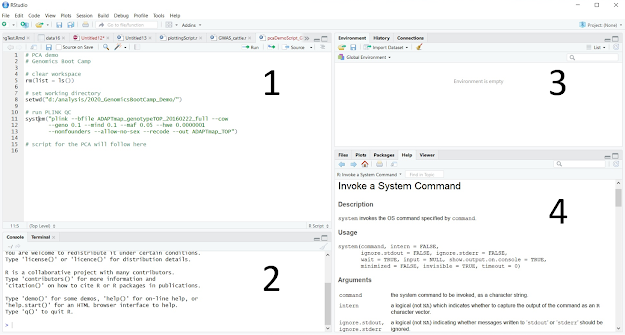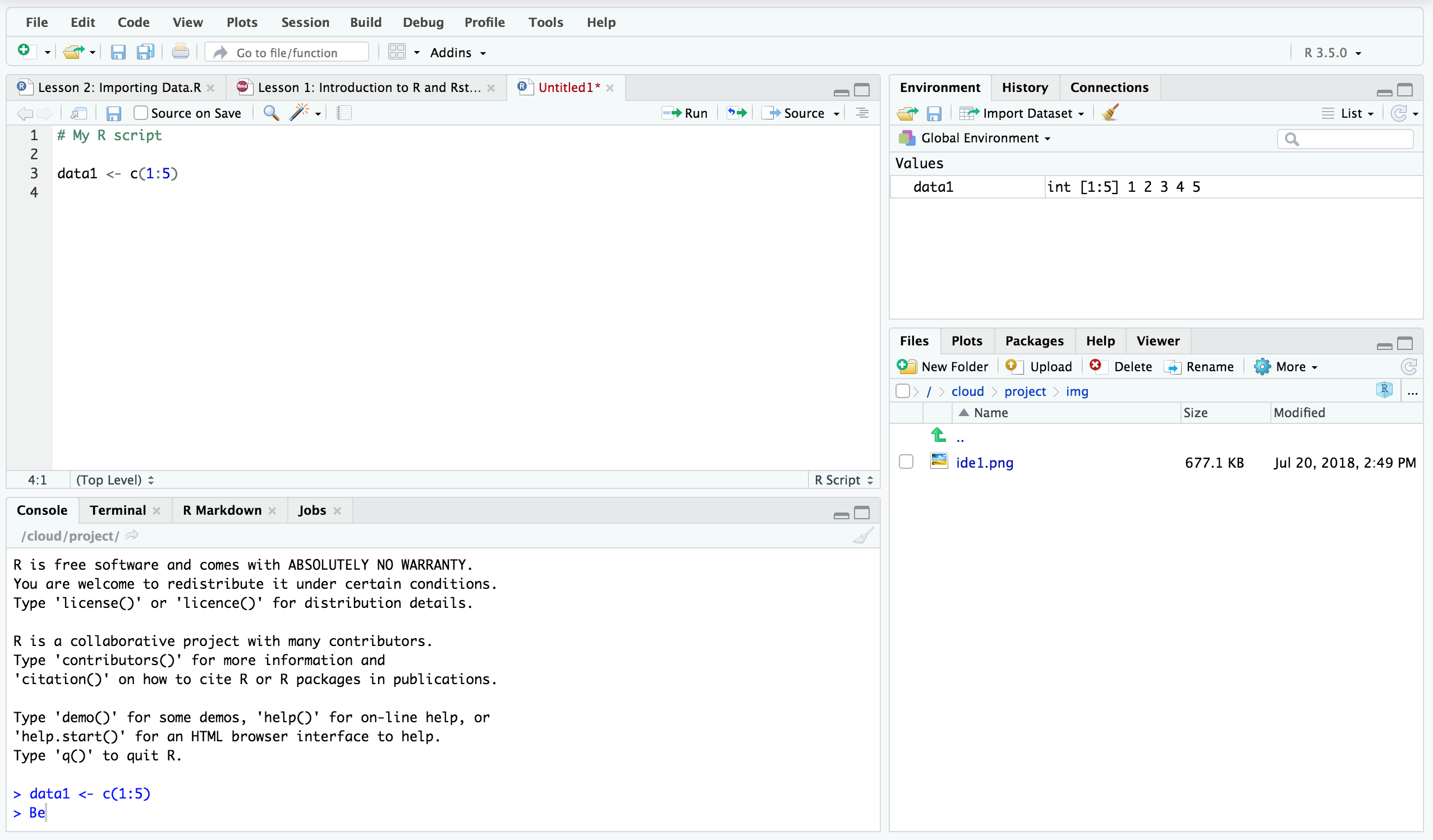

Occasionally, we will give you task to complete.

Therefore, below the boxes are lines of code that you enter into R (on the left) with some explanation of what you are doing on the right (after the # sign). We will also provide comments on what you are about to do. We will present instructions and important notes in boxes such as the one around this text. In order to get the most out of this tutorial, please note the following. „ScriptDay1.R“, a script file we’ve created to get you started. (Note: to avoid problems, do not try to open this file in Excel or another program).ģ. A handy sheet with lots of commands we’ll use in R.Ģ. Please download the following files that we’ll be using today from R Refcard. Division sign * Multiplication sign ~ Tilde, used for lattice functions (Day 2-3)

( Parenthesis Specifies the start of a function or argument ) Specifies the end of a function or argumentĮsc escape key: use to get back to main cursor prompt > NA means data are missing (different than zero) Specifies the end of an element of a set

On the right (renames, overwrites existing data!) $ Specifies a column name within a dataframe = Sets the value on the left equal to the value (Or you can copy and paste the symbols from here into a script and use them there.) On a Swedish keyboard, you will enter alt + 4 for $, alt + ( for. R uses these symbols for specific meanings, noted below.Īs keyboards vary depending on your laptop and on your language, please figure out how to type the following signs on your computer and note it below. BEFORE STARTING: SPECIAL KEYBOARD SIGNS IN Rīefore starting with the R tutorial, please familiarize yourself with the following symbols - this will help you to deal with R once you have started.


 0 kommentar(er)
0 kommentar(er)
